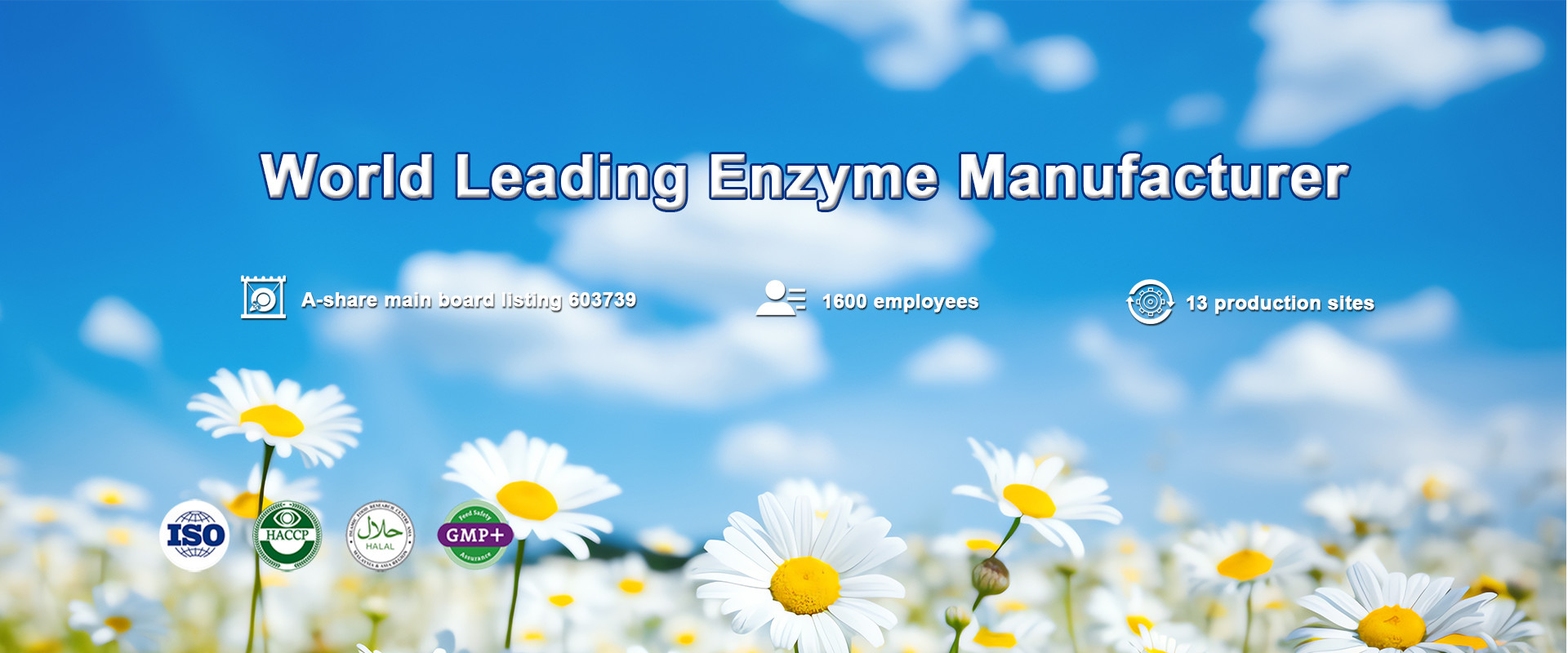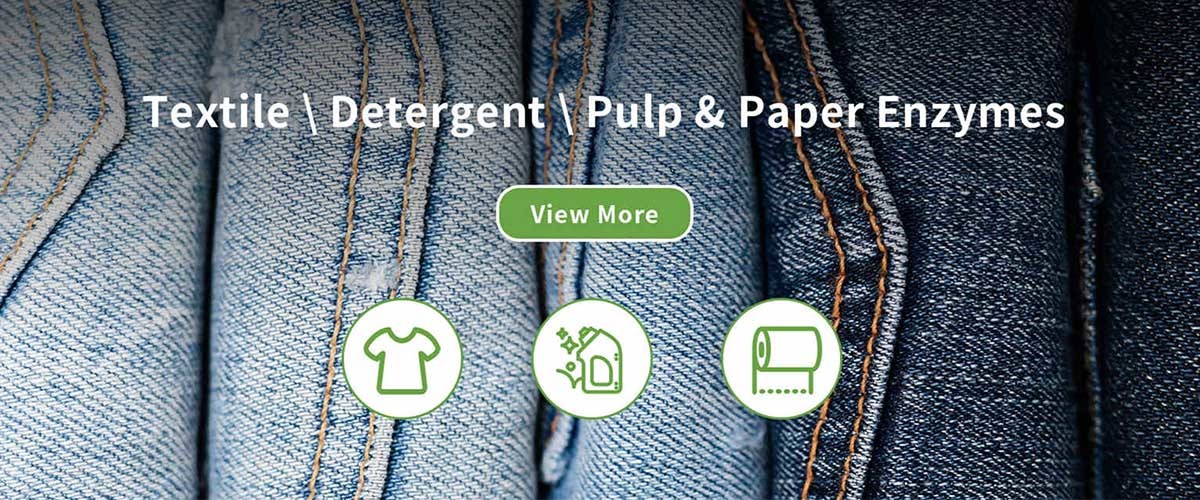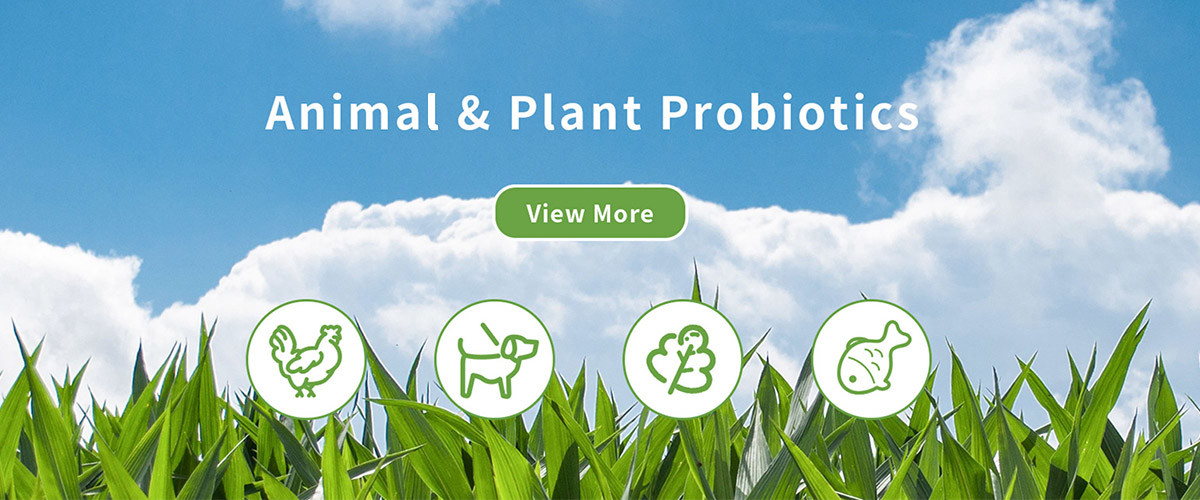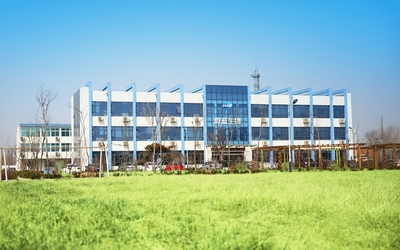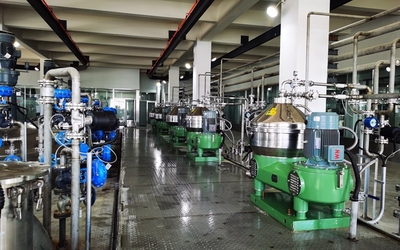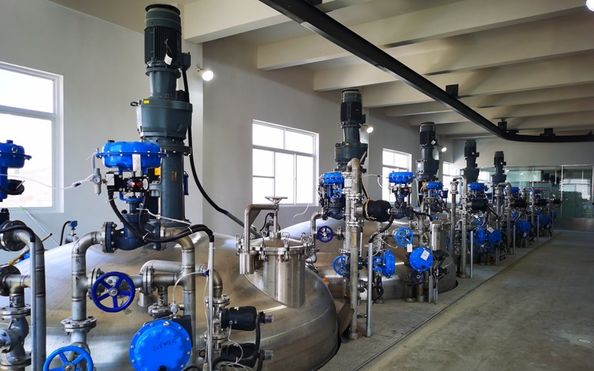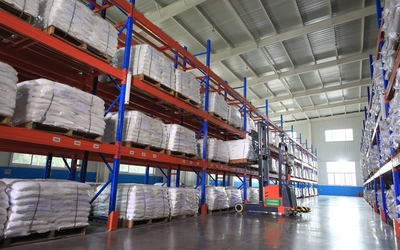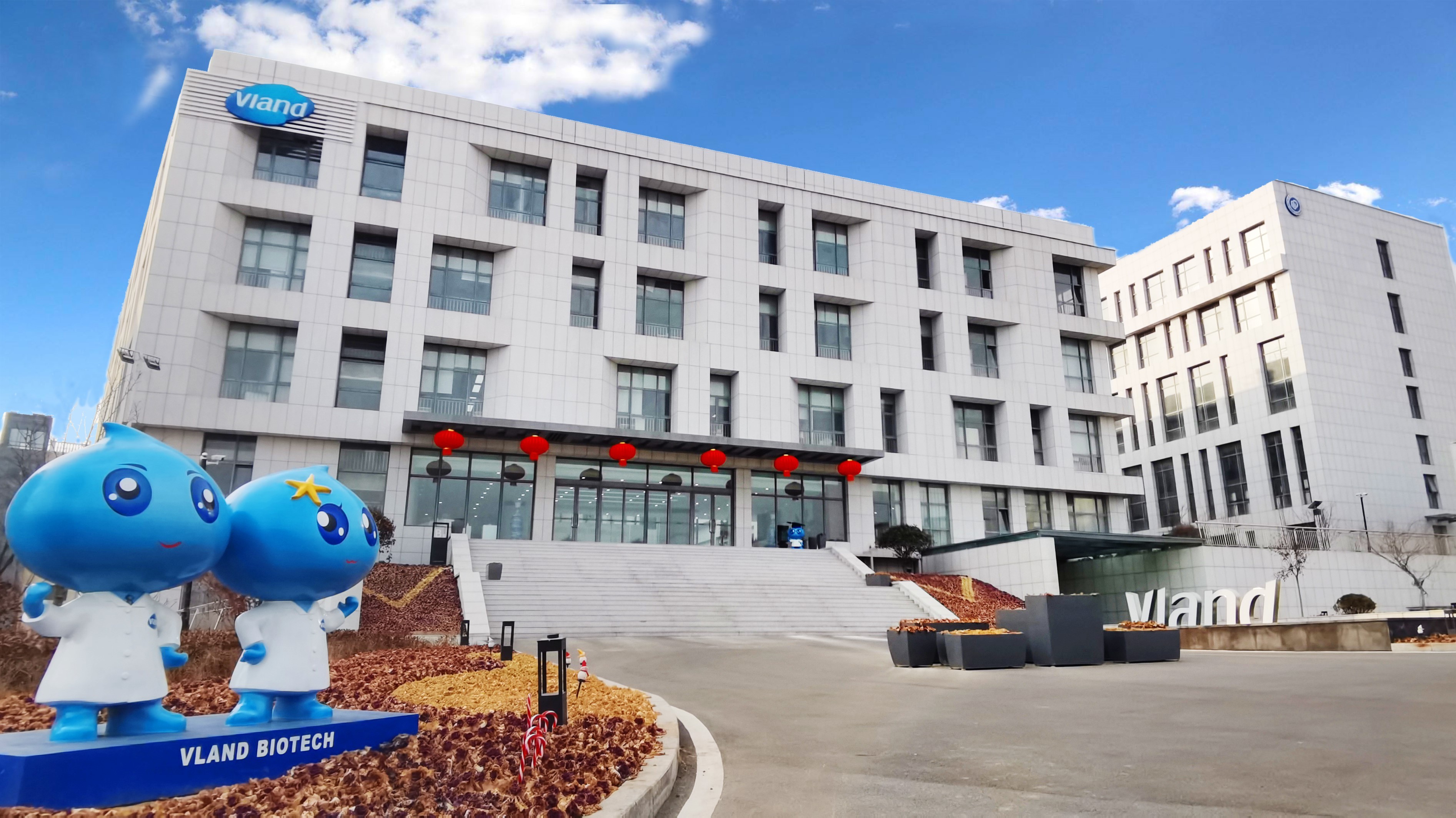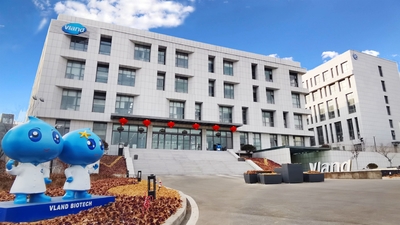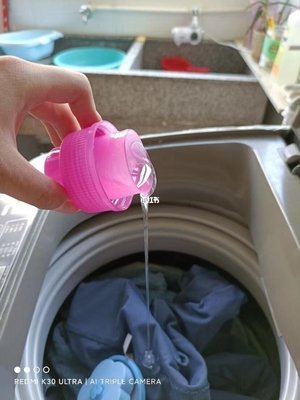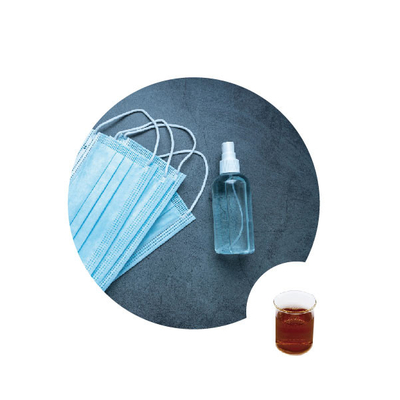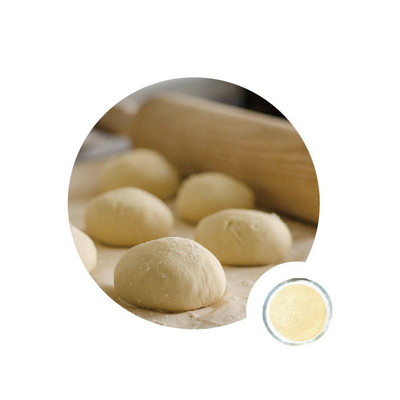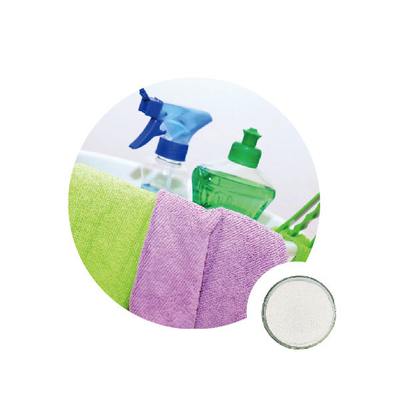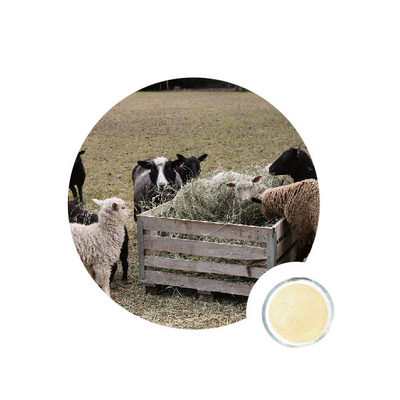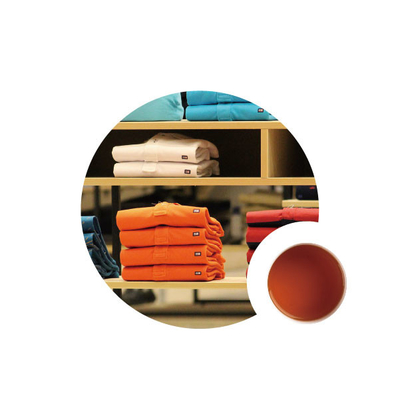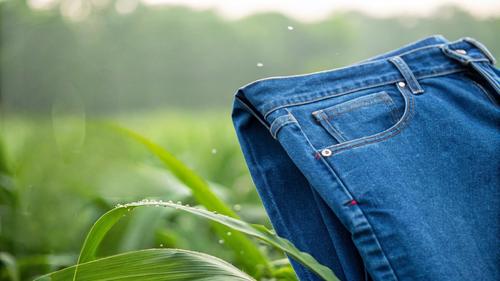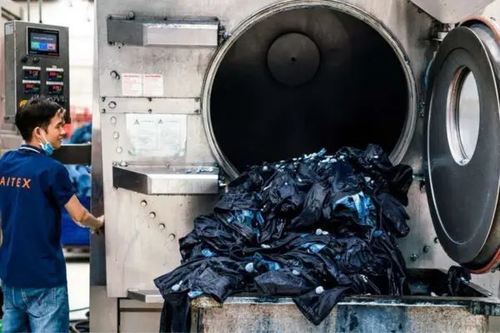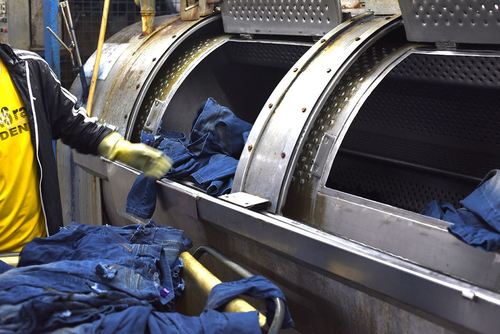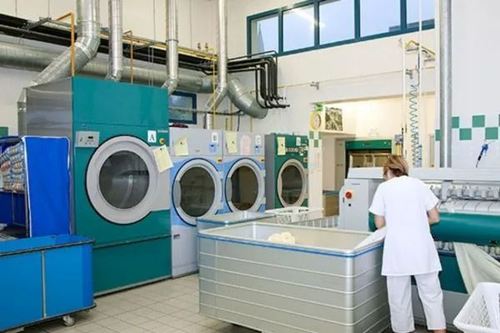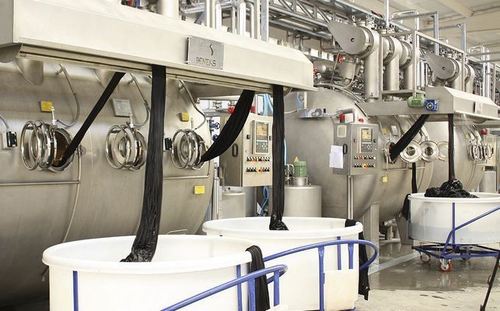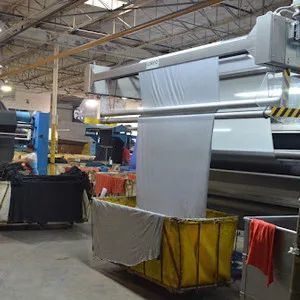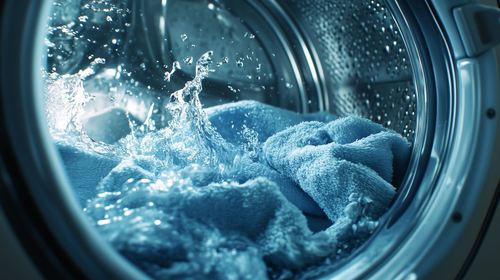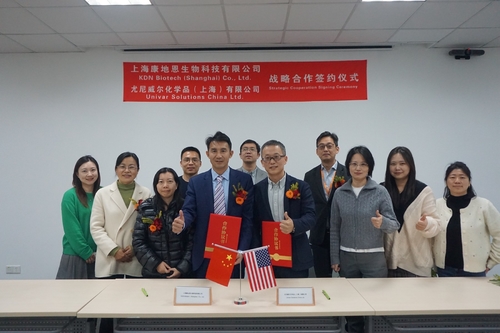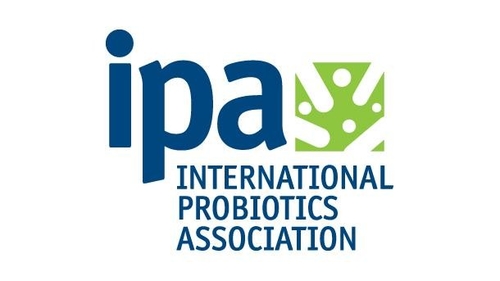Περιγραφή
Μαλακτικό σιλικόνης ασθενούς κατιονικού τύπου υψηλής απόδοσης σχεδιασμένο για να προσφέρει 25–50% βάθυνση απόχρωσης σε denim indigo και μαύρο. Κατάλληλο για εφαρμογές ψεκασμού, εξάτμισης και επικάλυψης, είναι ένα σταθερό, χωρίς φορμαλδεΰδη διάλυμα για σύγχρονα χημικά πλυσίματος, ένζυμα κλωστοϋφαντουργίας, και συστήματα ενζύμων απορρυπαντικών.
Λέξεις-κλειδιά
χημικά πλυσίματος, ένζυμα κλωστοϋφαντουργίας, ένζυμα απορρυπαντικών, μαλακτικό σιλικόνης, παράγοντας βάθυνσης απόχρωσης, χημικά φινιρίσματος denim, βοηθητικά φινιρίσματος κλωστοϋφαντουργίας, ασθενές κατιονικό σιλικόνης, χημικά πλυσίματος denim, βιώσιμη επεξεργασία κλωστοϋφαντουργίας, μαλακτικό υφασμάτων για denim
Εισαγωγή
Στο σύγχρονο φινίρισμα κλωστοϋφαντουργίας, τα χημικά πλυσίματος διαδραματίζουν καθοριστικό ρόλο στην ενίσχυση της εμφάνισης, του βάθους του χρώματος και της απόδοσης του υφάσματος, διασφαλίζοντας παράλληλα τη σταθερότητα και τη βιωσιμότητα της διαδικασίας. Τα προηγμένα παράγοντες φινιρίσματος με βάση τη σιλικόνη προτιμώνται όλο και περισσότερο για την ικανότητά τους να βελτιώνουν το βάθος της απόχρωσης, την απαλότητα και την οπτική εμφάνιση, χωρίς να διακυβεύεται η αντοχή του χρώματος.
Μεταξύ αυτών των καινοτομιών, οι ασθενείς κατιονικές γαλακτώματα σιλικόνης έχουν γίνει ένα απαραίτητο συστατικό σε συστήματα ενζύμων κλωστοϋφαντουργίας και φινιρίσματος υψηλής απόδοσης, ειδικά για denim και σκουρόχρωμα υφάσματα.
Τεχνολογία Βάθυνσης Απόχρωσης με Βάση τη Σιλικόνη
Αυτό το προηγμένο μαλακτικό σιλικόνης ασθενούς κατιονικού τύπου προσφέρει 25–50% βάθυνση απόχρωσης σε ένα ευρύ φάσμα ινών και κατασκευών υφασμάτων. Παράγει έναν καθαρό, ελκυστικό γαλαζωπό τόνο σε denim indigo ενώ επιτρέπει εξαιρετικά βαθιά μαύρα εφέ σε θείο μαύρο και άλλα σκουρόχρωμα υφάσματα.
Το προϊόν αποδίδει με συνέπεια σε βαμβάκι, πολυεστέρα, μείγματα πολυεστέρα/βαμβακιού και υφάσματα CVC, καθιστώντας το κατάλληλο τόσο για μονάδες πλυσίματος ενδυμάτων όσο και για βαφεία.
Βασικά Χαρακτηριστικά και Πλεονεκτήματα
25–50% βάθυνση απόχρωσης χωρίς να αλλοιώνεται η χημεία της βαφής
Καθαρός γαλαζωπός τόνος σε indigo και βαθύ μαύρο σε θείο μαύρο denim
Δεν επηρεάζει αρνητικά την αντοχή του χρώματος
Σταθερό σε σκληρό νερό με ισχυρή αντοχή σε οξέα και αλκάλια
Σταθερό υπό έντονη μηχανική διάτμηση
Χωρίς φορμαλδεΰδη για ασφαλέστερη και βιώσιμη επεξεργασία
Η ασθενώς κατιονική φύση εξασφαλίζει ελεγχόμενη αλληλεπίδραση με το ύφασμα
Αυτές οι ιδιότητες το καθιστούν ιδανικό σύντροφο σε συστήματα χημικών πλυσίματος που χρησιμοποιούνται παράλληλα με ένζυμα κλωστοϋφαντουργίας και ένζυμα απορρυπαντικών στην επεξεργασία denim.
Ευελιξία Εφαρμογής
Το προϊόν είναι συμβατό με πολλαπλές μεθόδους εφαρμογής, εξασφαλίζοντας σταθερά αποτελέσματα σε διαφορετικές ρυθμίσεις παραγωγής.
Μέθοδος ψεκασμού (Μονάδες πλυσίματος ενδυμάτων)
Λόγος αραίωσης: 40:60 (προϊόν : νερό)
Ψεκάστε ομοιόμορφα στα ενδύματα
Στεγνώστε στους 100°C
Μέθοδος εξάτμισης
Δοσολογία: 3–5 g/L
Θερμοκρασία: 25–30°C
Χρόνος: 15–20 λεπτά
Μέθοδος επικάλυψης (Βαφεία)
Δοσολογία: 20–60 g/L
Ομοιόμορφη απορρόφηση επικάλυψης
Στεγνώστε στους 150–170°C κατά την θερμική σταθεροποίηση
Δεν απαιτείται ρύθμιση pH, απλοποιώντας την επεξεργασία και μειώνοντας τον χειρισμό χημικών.
Συμβατότητα και Βιωσιμότητα
Το προϊόν παρουσιάζει εξαιρετική συμβατότητα με κοινά χημικά πλυσίματος, θεραπείες με βάση ένζυμα, και συστήματα απορρυπαντικών. Είναι σταθερό σε σκληρό νερό, αν και συνιστάται η διατήρηση της σκληρότητας κάτω από 200 ppm για βέλτιστα αποτελέσματα.
Καθώς η κλωστοϋφαντουργία κινείται προς την οικολογική παραγωγή, τα μαλακτικά σιλικόνης χωρίς φορμαλδεΰδη σε συνδυασμό με ένζυμα κλωστοϋφαντουργίας και ένζυμα απορρυπαντικών υποστηρίζουν τη μείωση της επανεπεξεργασίας, τη βελτίωση της αισθητικής του υφάσματος και τη σταθερή ποιότητα.
Συμπέρασμα
Η προηγμένη τεχνολογία μαλακτικού σιλικόνης ασθενούς κατιονικού τύπου προσφέρει μια αποτελεσματική λύση για την ενίσχυση της απόχρωσης και το φινίρισμα της επιφάνειας σε denim και επεξεργασία κλωστοϋφαντουργίας. Με υψηλή σταθερότητα, ευρεία συμβατότητα υφασμάτων και ευέλικτες μεθόδους εφαρμογής, παραμένει ένα βασικό συστατικό στα σύγχρονα, βιώσιμα συστήματα χημικών πλυσίματος.
Περιγραφή
Το Indifade OXD Conc είναι ένα υψηλής συγκέντρωσης, απαλλαγμένο από αλογόνα και μαγγάνιο εναλλακτικό του υπερμαγγανικού καλίου για το πλύσιμο denim. Ασφαλές, φιλικό προς το περιβάλλον και εύκολο στην εφαρμογή, προσφέρει φυσική αποχρωμάτιση σε indigo και μαύρο denim. Ιδανικό για χρήστες χημικών πλυσίματος, ενζύμων κλωστοϋφαντουργίας, ενζύμων απορρυπαντικών και ενζύμων τροφίμων.
Λέξεις-κλειδιά
Indifade OXD Conc, παράγοντας αποχρωματισμού denim, εναλλακτική PP, αντικατάσταση υπερμαγγανικού καλίου, βιώσιμα χημικά πλυσίματος, ένζυμα κλωστοϋφαντουργίας, ένζυμα απορρυπαντικών, ένζυμα τροφίμων, φιλικό προς το περιβάλλον φινίρισμα denim, λεύκανση με ψεκασμό denim, χημικά πλυσίματος ενδυμάτων, φυσικό ξεθώριασμα denim
Εισαγωγή
Καθώς η βιωσιμότητα και η ασφάλεια των εργαζομένων γίνονται προτεραιότητες της βιομηχανίας, οι επεξεργαστές denim αντικαθιστούν επικίνδυνα χημικά με καθαρότερες λύσεις. Το Indifade OXD Conc είναι ένας παράγοντας αποχρωματισμού επόμενης γενιάς που σχεδιάστηκε ως ασφαλέστερη εναλλακτική λύση του υπερμαγγανικού καλίου (PP). Παρέχει ελεγχόμενο, φυσικό ξεθώριασμα σε indigo και μαύρο denim μειώνοντας σημαντικά τους περιβαλλοντικούς και λειτουργικούς κινδύνους.
Συμβατό με ψεκασμό, βούρτσισμα, σφουγγάρι, γάντι μικροϊνών και ελεγχόμενη εμβάπτιση, υποστηρίζει ένα ευρύ φάσμα δημιουργικών φινιρισμάτων denim.
Γιατί να επιλέξετε Indifade OXD Conc;
Φιλικό προς το περιβάλλον & Ασφαλέστερο από το PP
Χωρίς αλογόνα, μαγγάνιο και βαρέα μέταλλα, το Indifade OXD Conc βελτιώνει την ασφάλεια στο χώρο εργασίας και ευθυγραμμίζεται με τους στόχους βιώσιμης παραγωγής.
Φυσικό, Υψηλής Ποιότητας Ξεθώριασμα
Η προηγμένη του σύνθεση παράγει πιο ομοιόμορφη και αισθητική αποχρωμάτιση σε σύγκριση με τις συμβατικές διαδικασίες ψεκασμού PP.
Απλό & Έτοιμο προς χρήση
Το προϊόν μπορεί να αραιωθεί με νερό και να εφαρμοστεί χρησιμοποιώντας τον υπάρχοντα εξοπλισμό PP, επιτρέποντας την εύκολη ενσωμάτωση στις τρέχουσες γραμμές πλυσίματος.
Αξιόπιστη Απόδοση
Ανοιχτό κίτρινο, διαφανές υγρό
pH (10 g/L): 1–3
Πλήρως υδατοδιαλυτό
Αποτελεσματικό σε θερμοκρασία δωματίου
Συνεπή και προβλέψιμα αποτελέσματα
Οδηγίες Εφαρμογής
Το Indifade OXD Conc εφαρμόζεται σε απομεγεθυμένα και προπλυμένα ενδύματα. Μηχανικές επεξεργασίες όπως το βούρτσισμα ή το τρίψιμο ενισχύουν την ομοιομορφία της λεύκανσης.
Μέθοδοι Εφαρμογής
Ψεκασμός (συνηθέστερος)
Χειροκίνητη βούρτσα
Σφουγγάρι
Γάντι μικροϊνών
Ελεγχόμενη εμβάπτιση
(Αποφύγετε την επαφή με το δέρμα; χρησιμοποιήστε προστατευτικό εξοπλισμό.)
Χρόνος Αντίδρασης
Αφήστε τα ενδύματα να αντιδράσουν σε θερμοκρασία δωματίου για 40 λεπτά έως 4 ώρες.⚠ Αποφύγετε το στέγνωμα σε στεγνωτήριο ή σε υψηλή θερμοκρασία για να αποφύγετε ζημιά στο ύφασμα.
Εξουδετέρωση
Μεταδιθειώδες νάτριο: 2–3 g/L
Θερμοκρασία: 45–50°C
Χρόνος: 10 λεπτάΧρησιμοποιήστε διασκορπιστικούς παράγοντες εάν εμφανιστεί έντονη αιμορραγία χρωστικής.
Δοσολογία
Τυπική χρήση ψεκασμού: 100–150 g ανά ένδυμα
Για ισχυρότερο ξεθώριασμα, εφαρμόστε με βούρτσα ή γάντι μικροϊνών
Βιωσιμότητα & Συμβατότητα με Ένζυμα
Το Indifade OXD Conc υποστηρίζει καθαρότερα συστήματα χημικών πλυσίματος και λειτουργεί αποτελεσματικά μαζί με ένζυμα κλωστοϋφαντουργίας όπως κυτταρινάση, αμυλάση, καταλάση και πρωτεάση. Αυτός ο συνδυασμός βοηθά στη μείωση του χημικού φορτίου, της χρήσης ενέργειας και της κατανάλωσης νερού, βελτιώνοντας παράλληλα την ποιότητα του υφάσματος και την ασφάλεια της διαδικασίας.
Συμπέρασμα
Το Indifade OXD Conc είναι μια σύγχρονη, οικολογική εναλλακτική λύση του υπερμαγγανικού καλίου, προσφέροντας ασφαλή χειρισμό, φυσικό ξεθώριασμα και λειτουργική απλότητα. Η συμβατότητά του με την επεξεργασία με βάση ένζυμα το καθιστά ιδανική επιλογή για πλυντήρια denim και κατασκευαστές ενδυμάτων που δεσμεύονται στη βιώσιμη παραγωγή χρησιμοποιώντας προηγμένα χημικά πλυσίματος και ένζυμα.
Περιγραφή
Το Stonezyme WL είναι νέας γενιάςουδέτερο ένζυμο κυτταράσηςαναπτύχθηκε για πλύσιμο τζιν. Προσφέρει γρήγορη τριβή, υψηλή αντίθεση και χαμηλό λεκέ στο εσωτερικό30–60°C, ενεργοποιώνταςπλύσιμο χωρίς πέτρες ή με μειωμένη πέτρα. Ιδανικό γιαφιλική προς το περιβάλλον επεξεργασία υφασμάτωνκαι βιώσιμηχημικά σκευάσματα πλύσης.
Λέξεις-κλειδιά
Stonezyme WL, χημικά πλυσίματος, ένζυμα υφασμάτων, ένζυμα απορρυπαντικών, ουδέτερη κυτταρινάση, ένζυμο για πλύσιμο τζιν, πλύσιμο με ένζυμα, φιλικό προς το περιβάλλον καθαριστικό, ένζυμο φινιρίσματος ενδυμάτων, ένζυμο τζιν, βιομηχανικό ένζυμο, βιώσιμη επεξεργασία υφασμάτων
Εισαγωγή
Στη σύγχρονη επεξεργασία υφασμάτων,χημικά πλύσης και ένζυμα κλωστοϋφαντουργίαςείναι απαραίτητα για την επίτευξη φινιρίσματος υψηλής ποιότητας με μειωμένες περιβαλλοντικές επιπτώσεις.Stonezyme WL, που αναπτύχθηκε απόKDN Biotech (Shanghai) Co., Ltd., είναι ένα ένζυμο ουδέτερης κυτταρλάσης επόμενης γενιάς που έχει σχεδιαστεί για τζιν και καθημερινό πλύσιμο. Επιτρέπει την αποτελεσματική τριβή με χαμηλό λεκέ ενώ μειώνει ή εξαλείφει σημαντικά τη χρήση ελαφρόπετρας - βελτιώνοντας τόσο τη βιωσιμότητα όσο και την ποιότητα του υφάσματος.
Καινοτόμος ενζυματική τεχνολογία
Το Stonezyme WL συνδυάζειουδέτερες κυτταρινάσες, προηγμένα συστήματα buffer καιπαράγοντες κατά των λεκέδωνγια να προσφέρει σταθερή τριβή, ισορροπημένο κόκκο και ισχυρή αντίθεση προστατεύοντας παράλληλα την αντοχή του υφάσματος. Το ευρύ φάσμα λειτουργίας του30–60°CκαιpH 5,5–8,0εξασφαλίζει σταθερή απόδοση κάτω από διαφορετικές συνθήκες πλυσίματος.
Βασικά Χαρακτηριστικά και Οφέλη
Υψηλή απόδοση τριβής με εξαιρετική απόδοση κόστους
Ευρεία θερμοκρασία (30–60°C) και προσαρμοστικότητα ουδέτερου pH
Επιτρέπει το πλύσιμο χωρίς πέτρες ή με μειωμένη πέτρα
Ισορροπημένος κόκκος, υψηλή αντίθεση και χαμηλός ερεισίνωτος
Συμβατό με κοινά χημικά πλυσίματος και μη ιονικά επιφανειοδραστικά
Φιλικό προς το περιβάλλον, μειώνοντας το νερό, την ενέργεια και τα στερεά απόβλητα
Συνιστώμενη θερμοκρασία λειτουργίας: 40–45°C για βέλτιστη ισορροπία μεταξύ του ελέγχου κόκκων και λεκέδων.
Συστάσεις εφαρμογής
Το Stonezyme WL μπορεί να εφαρμοστεί μετά το ξεφλούδισμα ή κατά τη διάρκεια της κύριας πλύσης, ανάλογα με τις ανάγκες επεξεργασίας.
1️⃣ Καθαρισμός / προκαταρκτική πλύση
Amzyme LT:1 g/L
Παράγοντας διασποράς:1 g/L
Αναλογία ποτών:1:5
Θερμοκρασία:30–60°C(Βέλτιστη 45–55°C)
pH:5,5–8,0(Βέλτιστη 6,0–7,0)
Φορά:15–20 λεπτά
2️⃣ Διαδικασία πλύσης πέτρας
Δοσολογία:0,3–0,7% ωγ
Φορά:30–40 λεπτάσε κρύο ξέβγαλμα
Εφαρμόστε απευθείας σε βρεγμένα ρούχα. επαναλαμβάνω2-3 κύκλοιαν χρειαστεί
3️⃣ Καθαρισμός (εάν απαιτείται)
Απορρυπαντικό:1 g/L (pH 4–5)για 20-30 λεπτά
Απενεργοποίηση ενζύμων:
1–2 g/L ανθρακικό νάτριοστους 60–70°C για 15 λεπτά ή
Ζεσταίνουμε στους 70–80°C για 10 λεπτά
Για φινίρισμα,Μαλακτικά UnisoftκαιΠράκτορες χειρισμού Unichemσυνιστώνται.
Συσκευασία, αποθήκευση & ασφάλεια
Συσκευασία:Χάρτινο κουτί 25 κιλών
Αποθήκευση:≤25°C σε σφραγισμένα δοχεία
Αποφύγετε την εισπνοή ενζυμικής σκόνης. ξεπλύνετε το δέρμα ή τα μάτια με νερό εάν εκτεθούν. ΠαραπέμπωMSDSγια λεπτομερείς πληροφορίες ασφαλείας.
Σύναψη
Η Stonezyme WL προσφέρει μια υψηλής απόδοσης, βιώσιμη λύση για το πλύσιμο τζιν. Με το ευρύ φάσμα λειτουργίας του, την ικανότητα χωρίς πέτρες και τη σταθερή απόδοση, ξεχωρίζει μεταξύ των σύγχρονωνχημικά πλύσης και ένζυμα κλωστοϋφαντουργίας, βοηθώντας τους κατασκευαστές να επιτύχουν premium φινιρίσματα τζιν μελιγότερη ενέργεια, λιγότερα απόβλητα και υψηλότερη παραγωγικότητα.
Περιγραφή:Το Stonezyme SF είναι ένα ένζυμο κυτταρινάσης ουδέτερου pH νέας γενιάς για πλύσιμο denim, προσφέροντας υψηλή τριβή, χαμηλούς λεκέδες και επεξεργασία χωρίς πέτρες. Σχεδιασμένο για ευρεία εύρη θερμοκρασίας και pH, προσφέρει βιώσιμη, οικονομικά αποδοτική απόδοση σε χημικά πλυσίματος και εφαρμογές ενζύμων κλωστοϋφαντουργίας.
Λέξεις-κλειδιά:Stonezyme SF, χημικά πλυσίματος, ένζυμα κλωστοϋφαντουργίας, ένζυμα απορρυπαντικών, ένζυμα τροφίμων, ουδέτερη κυτταρινάση, ένζυμο πλυσίματος denim, πλύσιμο με ένζυμα, φιλικό προς το περιβάλλον παράγοντας πλυσίματος, ένζυμο για denim, φινίρισμα ενδυμάτων, KDN Biotech, βιομηχανικό ένζυμο, βιώσιμη επεξεργασία κλωστοϋφαντουργίας
Στον ταχέως εξελισσόμενο κόσμο των χημικά πλυσίματος και ενζύμων κλωστοϋφαντουργίας, η καινοτομία οδηγεί στην αποδοτικότητα, τη βιωσιμότητα και την ποιότητα. Το Το Stonezyme SF, που αναπτύχθηκε από την KDN Biotech (Shanghai) Co., Ltd., αντιπροσωπεύει μια σημαντική εξέλιξη στην τεχνολογία ενζύμων ουδέτερης κυτταρινάσης. Σχεδιασμένο για γρήγορη τριβή, υψηλή αντίθεση και χαμηρούς λεκέδες, προσφέρει εξαιρετικά αποτελέσματα στο πλύσιμο denim — ενώ μειώνει σημαντικά ή και εξαλείφει την ανάγκη για πέτρες ελαφρόπετρας.
Προηγμένη Ενζυμική Τεχνολογία
Το Stonezyme SF είναι διαμορφωμένο με μια νέα γενιά ουδέτερων κυτταρινασών, ενισχυμένα χημικά ρυθμιστικά διαλύματα και αντι-λεκέ παράγοντες. Αυτός ο μοναδικός συνδυασμός εξασφαλίζει ισορροπημένη απόδοση — παρέχοντας εξαιρετική τριβή, αποδεκτό κόκκο και ελάχιστη επανα-κηλίδωση, ακόμη και υπό ήπιες συνθήκες πλυσίματος.
Βασικά Χαρακτηριστικά και Πλεονεκτήματα
Ανώτερη απόδοση τριβής με εξαιρετικά ανταγωνιστική αναλογία κόστους-απόδοσης.
Ευρύ φάσμα θερμοκρασίας (30–60°C) — αποδίδει αποτελεσματικά υπό διάφορες συνθήκες επεξεργασίας.
Προσαρμοστικότητα σε ουδέτερο pH (5.5–8.0) — συμβατό με τα περισσότερα συστήματα πλυσίματος.
Επεξεργασία χωρίς πέτρες ή μειωμένη χρήση πετρών — ελαχιστοποιεί τη χρήση ελαφρόπετρας, μειώνοντας τη φθορά των μηχανημάτων και τις περιβαλλοντικές επιπτώσεις.
Βέλτιστη λειτουργία στους 45–55°C — επιτυγχάνει την τέλεια ισορροπία μεταξύ κοκκοποίησης, χρωματικής αντίθεσης και χαμηλών λεκέδων.
Με την ενσωμάτωση του Το Stonezyme SF στο φινίρισμα denim, οι κατασκευαστές μπορούν να μειώσουν τη χρήση ενέργειας, να απλοποιήσουν τις διαδικασίες και να παράγουν υψηλής ποιότητας, φιλικά προς το περιβάλλον ενδύματα.
Οδηγίες Εφαρμογής
Συνιστώμενη Δοσολογία:
Ενδύματα Denim (πλυντήρια κοιλιάς/μπροστινής φόρτωσης): 0.5–1.0% owg
Συνιστώμενες Συνθήκες:
Θερμοκρασία: 30–60°C (βέλτιστη: 45–55°C)
Εύρος pH: 5.5–8.0 (βέλτιστο: 6.0–7.0)
Αυτές οι ευέλικτες συνθήκες καθιστούν το Το Stonezyme SF ιδανική επιλογή για τα πλυντήρια που στοχεύουν στην βελτιστοποίηση της απόδοσης και στη μείωση του κόστους παραγωγής, διατηρώντας παράλληλα σταθερά αποτελέσματα πλυσίματος.
Βιωσιμότητα και Ευελιξία
Σε αντίθεση με τα συμβατικά χημικά πλυσίματος, το Το Stonezyme SF βασίζεται στην βιοδιασπώμενη τεχνολογία ενζύμων. Η ικανότητά του να λειτουργεί αποτελεσματικά σε χαμηλές έως μέτριες θερμοκρασίες συμβάλλει στην εξοικονόμηση ενέργειας και στην περιβαλλοντική βιωσιμότητα.
Ενώ έχει σχεδιαστεί κυρίως για φινίρισμα denim, η τεχνολογία διαμόρφωσής του αποτελεί μέρος του ευρύτερου χαρτοφυλακίου ενζύμων της KDN Biotech, το οποίο περιλαμβάνει επίσης ένζυμα τροφίμων και ένζυμα απορρυπαντικών— όλα σχεδιασμένα για καθαρότερες, πιο πράσινες λύσεις κατασκευής.
Συσκευασία και Αποθήκευση
Συσκευασία: Χάρτινο κουτί 25 kg
Αποθήκευση: Διατηρείτε σε θερμοκρασία 25°C ή χαμηλότερη σε σφραγισμένο δοχείο για να διατηρήσετε τη δραστηριότητα του ενζύμου. Αποφύγετε την έκθεση στη θερμότητα για παρατεταμένες περιόδους.
Ασφάλεια και Χειρισμός
Το Stonezyme SF είναι μη εύφλεκτο και ασφαλές όταν χειρίζεται σωστά. Αποφύγετε την εισπνοή σκόνης ή ομίχλης ενζύμων. Σε περίπτωση επαφής με το δέρμα ή τα μάτια, ξεπλύνετε αμέσως με άφθονο νερό για τουλάχιστον 15 λεπτά. Για λεπτομερείς διαδικασίες χειρισμού, συμβουλευτείτε το Δελτίο Δεδομένων Ασφαλείας Υλικού (MSDS) που διατίθεται από την KDN Biotech (Shanghai) Co., Ltd.
Συμπέρασμα
Το Stonezyme SF συνδυάζει τις τελευταίες εξελίξεις στην τεχνολογία ενζύμων ουδέτερης κυτταρινάσης με ανώτερη αποδοτικότητα διεργασίας. Το ευρύ φάσμα λειτουργίας του, η οικονομική του απόδοση και η φιλική προς το περιβάλλον σύνθεσή του το καθιστούν προτιμώμενη επιλογή στις σύγχρονες εφαρμογές ενζύμων κλωστοϋφαντουργίας. Χρησιμοποιώντας το Stonezyme SF, οι επεξεργαστές ενδυμάτων μπορούν να επιτύχουν αισθητική denim υψηλής ποιότητας —με λιγότερη ενέργεια, λιγότερα απόβλητα και περισσότερη αξία.
Περιγραφή:Το Stonezyme DP6000 είναι ένα ένζυμο κυτταρινάσης σε μορφή σκόνης υψηλής συγκέντρωσης, σχεδιασμένο για το πλύσιμο denim και casual ρούχων. Διαθέτοντας ευρεία προσαρμοστικότητα pH, έντονη αντίθεση τριβής και εξαιρετική απόδοση σε χαμηλές θερμοκρασίες, προσφέρει μια βιώσιμη και οικονομικά αποδοτική λύση για τα χημικά πλυσίματος και το φινίρισμα υφασμάτων.
Λέξεις κλειδιά:Stonezyme DP6000, χημικά πλυσίματος, ένζυμα υφασμάτων, ένζυμα απορρυπαντικών, ένζυμα τροφίμων, ένζυμο πλυσίματος denim, ένζυμο χαμηλής θερμοκρασίας, σκόνη κυτταρινάσης, KDN Biotech, φιλικό προς το περιβάλλον παράγοντας πλυσίματος, ένζυμο πλύσιμο, φινίρισμα ενδυμάτων, σύνθεση ενζύμων, βιομηχανικά ένζυμα
Στη σημερινή βιομηχανία κλωστοϋφαντουργίας, χημικά πλυσίματος και τις ένζυμα υφασμάτων διαδραματίζουν καθοριστικό ρόλο στην επίτευξη τόσο της βιωσιμότητας όσο και του υψηλής ποιότητας φινιρίσματος. Μεταξύ αυτών, το Το Stonezyme DP6000, που αναπτύχθηκε από την KDN Biotech (Shanghai) Co., Ltd., ξεχωρίζει ως ένα ένζυμο κυτταρινάσης σε σκόνη νέας γενιάς σχεδιασμένο για το πλύσιμο denim και το φινίρισμα ενδυμάτων. Με την δραστηριότητά του σε χαμηλή θερμοκρασία, την υψηλή συγκέντρωση ενζύμων και την ευρεία προσαρμοστικότητα pH, προσφέρει μέγιστη αποδοτικότητα κόστους και περιβαλλοντικά οφέλη.
Βασικά χαρακτηριστικά του Stonezyme DP6000
Το Stonezyme DP6000 έχει σχεδιαστεί για να καλύπτει τις απαιτητικές απαιτήσεις του φινιρίσματος denim και casual ρούχων. Παρακάτω είναι τα αξιοσημείωτα χαρακτηριστικά του:
Υψηλή συγκέντρωση ενζύμων — Παρέχει την καλύτερη αναλογία κόστους-απόδοσης για τους διαμορφωτές.
Δραστηριότητα σε χαμηλή θερμοκρασία (20–40°C) — Εξασφαλίζει αποτελεσματική απόδοση του ενζύμου ακόμη και σε συνθήκες εξοικονόμησης ενέργειας.
Ευρεία προσαρμοστικότητα pH (6.0–7.5) — Ιδανικό για ουδέτερα ή ήπια αλκαλικά συστήματα πλυσίματος.
Έντονη αντίθεση τριβής — Παράγει ένα υψηλό τρισδιάστατο εφέ με ελάχιστη αφαίρεση χρώματος.
Εξαιρετική διατήρηση αντοχής — Διατηρεί την ανθεκτικότητα και την υφή του υφάσματος.
Αντι-επανεμφάνιση λεκέδων — Διατηρεί τα πλυμένα ρούχα καθαρά και φωτεινά.
Αυτά τα οφέλη καθιστούν το Το Stonezyme DP6000 μια προτιμώμενη επιλογή για τα πλυντήρια denim που στοχεύουν να συνδυάσουν την οικολογική αποδοτικότητα και την κορυφαία αισθητική.
Εφαρμογή και Σύνθεση
Το Stonezyme DP6000 είναι μια καθαρή σκόνη ενζύμου συμβατή με ρυθμιστικά διαλύματα, μη ιονικές επιφανειοδραστικές ουσίες και πληρωτικά. Μπορεί εύκολα να διαμορφωθεί σε προσαρμοσμένα χημικά πλυσίματος ενζύμων σύμφωνα με τις απαιτήσεις της διαδικασίας.
Συνιστώμενες συνθήκες εφαρμογής:
Δοσολογία: 1–2 g/L
Θερμοκρασία: 20–40°C
Εύρος pH: 6.0–7.5 (βέλτιστο 6.0)
Χρόνος επεξεργασίας: 20–40 λεπτά
Τυπική σύνθεση (βάσει βάρους ενδύματος):
Stonezyme DP6000: 0.2–1.5%
Άλας ρυθμιστικού διαλύματος: 20–40%
Άλας αντίστασης: 0–20%
Επιφανειοδραστικές ουσίες: 0–10%
Διαλυτά πληρωτικά: 0–30%
Παράγοντες περιποίησης: 0–5%
Σημείωση: Αποφύγετε τις ανιονικές επιφανειοδραστικές ουσίες. χρησιμοποιήστε συμβατούς μη ιονικούς τύπους για καλύτερα αποτελέσματα.
Βιωσιμότητα και Ευελιξία
Διατηρώντας την υψηλή απόδοση σε χαμηλές θερμοκρασίες, το Stonezyme DP6000 μειώνει την κατανάλωση νερού και ενέργειας—καθιστώντας το μια βιώσιμη λύση για τη βιομηχανία κλωστοϋφαντουργίας. Ενώ έχει σχεδιαστεί κυρίως για το φινίρισμα denim, η ενζυματική του απόδοση το καθιστά επίσης σχετικό με άλλες βιομηχανίες που χρησιμοποιούν ένζυμα απορρυπαντικών και τις ένζυμα τροφίμων για βελτιωμένο έλεγχο της διαδικασίας και φιλική προς το περιβάλλον κατασκευή.
Ασφαλής χειρισμός και αποθήκευση
Αποθηκεύστε κάτω από 25°C σε σφραγισμένο δοχείο.
Αποφύγετε την παρατεταμένη έκθεση στη θερμότητα για να διατηρήσετε τη δραστηριότητα.
Αποτρέψτε την άμεση επαφή και την εισπνοή σκόνης ενζύμων.
Σε περίπτωση επαφής με το δέρμα ή τα μάτια, ξεπλύνετε αμέσως με νερό.
Για λεπτομερείς οδηγίες ασφαλείας, ανατρέξτε στο Φύλλο Δεδομένων Ασφαλείας Υλικού (MSDS) που διατίθεται από την KDN Biotech (Shanghai) Co., Ltd.
Συμπέρασμα
Το Stonezyme DP6000 αντιπροσωπεύει ένα νέο σημείο αναφοράς στα χημικά πλυσίματος και τις τεχνολογία ενζύμων υφασμάτων. Με την απόδοσή του σε χαμηλή θερμοκρασία, την υψηλή συγκέντρωση και την ανώτερη ποιότητα φινιρίσματος, δίνει τη δυνατότητα στους επεξεργαστές ενδυμάτων να επιτύχουν τόσο την αποδοτικότητα όσο και τη βιωσιμότητα.Για περισσότερες πληροφορίες, επικοινωνήστε με την KDN Biotech (Shanghai) Co., Ltd., έναν αξιόπιστο ηγέτη στα βιομηχανικά ένζυμα και τις φιλικές προς το περιβάλλον λύσεις κλωστοϋφαντουργίας.
Περιγραφή:Το Catazyme 800L της KDN Biotech είναι ένα συμπυκνωμένο ένζυμο καταλάσης σχεδιασμένο να αποσυνθέτει το υπολειμματικό υπεροξείδιο του υδρογόνου μετά τη λεύκανση. Εξασφαλίζει ασφαλή βαφή, χαμηλή χρήση νερού και φιλική προς το περιβάλλον επεξεργασία υφασμάτων.
Λέξεις-κλειδιά:Catazyme 800L, ένζυμο καταλάσης, απομάκρυνση υπεροξειδίου του υδρογόνου, ένζυμο λεύκανσης υφασμάτων, επεξεργασία μετά τη λεύκανση, φιλικό προς το περιβάλλον χημικό πλύσιμο, ένζυμο για προετοιμασία βαφής, βιώσιμη επεξεργασία υφασμάτων, KDN Biotech, ένζυμο λεύκανσης ενδυμάτων, βοηθητικό ένζυμο υφασμάτων
Οικολογικό διάλυμα καταλάσης για προετοιμασία μετά τη λεύκανση και τη βαφή
Catazyme 800L, που αναπτύχθηκε απόKDN Biotech (Shanghai) Co., Ltd., είναι αένζυμο υγρής καταλάσης υψηλής συγκέντρωσης βιομηχανικής ποιότηταςπου παράγονται από βυθισμένη ζύμωση ενός γενετικά τροποποιημένουBacillus subtilisένταση. Είναι ειδικά σχεδιασμένο για νααποσυνθέτουν το υπολειπόμενο υπεροξείδιο του υδρογόνουπου μένει μετά τη λεύκανση των βαμβακερών πλεκτών και νημάτων — εξασφαλίζοντας καθαρά, ασφαλή και έτοιμα για βαφή υφάσματα.
Διασπώντας το υπεροξείδιο του υδρογόνου σεοξυγόνο και νερό (2H2O2 → 2H2O + O2), το Catazyme 800L παρέχει έναφιλική προς το περιβάλλον και αποτελεσματική λύσηπου ελαχιστοποιεί τη χρήση νερού, μειώνει τον χρόνο επεξεργασίας και προστατεύει την ποιότητα του υφάσματος πριν από τη βαφή.
Τυπικά Χαρακτηριστικά
Ιδιοκτησία
Προσδιορισμός
Εμφάνιση
Υγρό Σκούρο Καφέ
pH
4,5 – 7,0
Ειδικό Βάρος
1,0 – 1,1
Ορισμός δραστηριότητας:1 Ctun = η ποσότητα του ενζύμου που αποσυντίθεται1 μmol υπεροξειδίου του υδρογόνου ανά λεπτόυπό τυπικές συνθήκες δοκιμής (ρΗ 7,0, 30°C).
Βασικά Πλεονεκτήματα
Αποτελεσματική αφαίρεση υπεροξειδίου του υδρογόνου– Εξασφαλίζει πλήρη διάσπαση του υπεροξειδίου πριν από τη βαφή.
Μειωμένη Κατανάλωση Νερού– Επιτρέπει την επεξεργασία στο ίδιο λουτρό, εξοικονομώντας νερό έκπλυσης.
Σύντομος χρόνος διαδικασίας– Ταχεία αποβολή υπεροξειδίου για ταχύτερους κύκλους παραγωγής.
Ασφαλές και αξιόπιστο– Αποτρέπει ελαττώματα βαφής που προκαλούνται από υπολείμματα υπεροξειδίου.
Οικολογικό– Μετατρέπει το υπεροξείδιο σε αβλαβές οξυγόνο και νερό, μειώνοντας το φορτίο των λυμάτων.
Οδηγίες εφαρμογής
1.Στραγγίστε το λουτρό λεύκανσης.2.Ξαναγεμίστε με φρέσκο νερό στη θερμοκρασία και την αναλογία υγρού που απαιτείται για τη βαφή.3.Ρυθμίστε το pH του μπάνιου σε6–8και βεβαιωθείτε ότι η θερμοκρασία είναικάτω από 55°C.4.Προσθέτω0,002–0,005 g/LCatazyme 800L και αρχίζει η κυκλοφορία.5.Μετά10 λεπτά, δοκιμή για υπολειμματικό υπεροξείδιο του υδρογόνου. Εάν υπάρχει, συνεχίστε γιαάλλα 5-10 λεπτά.6.Μόλις επιβεβαιωθεί η αποβολή υπεροξειδίου, προχωρήστε απευθείας στη διαδικασία βαφής στο ίδιο λουτρό.
Δοσολογικές Συστάσεις
Τυπικό εύρος:0,001–0,01 g/L (ανάλογα με τον τύπο του υφάσματος και το υπολειπόμενο επίπεδο υπεροξειδίου)
Τα καλύτερα αποτελέσματα:Διατηρήστε τη βέλτιστη θερμοκρασία κάτω από 55°C και ουδέτερο pH.
Συσκευασία & Αποθήκευση
Συσκευασία:Πλαστικό τύμπανο 30 κιλών
Αποθήκευση:Διατηρήστε σφραγισμένο στο ή κάτω25°C
Διάρκεια ζωής:12 μήνες υπό καλές συνθήκες αποθήκευσης
Ασφάλεια & Χειρισμός
Αποφύγετε την εισπνοή ενζυμικής ομίχλης ή σκόνης. Σε περίπτωση επαφής με το δέρμα ή τα μάτια, ξεπλύνετε καλά με νερό για τουλάχιστον 15 λεπτά.Ανατρέξτε στοΦύλλο δεδομένων ασφαλείας υλικού (MSDS)διαθέσιμο απόKDN Biotech (Shanghai) Co., Ltd.
Βιώσιμη Επεξεργασία με Catazyme 800L
Το υπεροξείδιο του υδρογόνου είναι βασικός παράγοντας στη λεύκανση των υφασμάτων, αλλά τα υπολείμματά του μπορούν να επηρεάσουν την πρόσληψη της βαφής και την ποιότητα του υφάσματος.Catazyme 800Lπροσφέρει απράσινο, εναλλακτική λύση υψηλής απόδοσηςσε χημικούς εξουδετερωτές, εξασφαλίζοντας υφάσματα χωρίς υπεροξείδια έτοιμα για βαφή.
Η ενζυματική του διαδικασία όχι μόνο προστατεύει την ακεραιότητα των ινών αλλά καιενισχύει την ασφάλεια της διαδικασίας, μειώνει τη χρήση νερού και ελαχιστοποιεί τις περιβαλλοντικές επιπτώσεις, καθιστώντας το ιδανική επιλογή γιασύγχρονα υφαντουργεία και πλυντήρια ενδυμάτωναφοσιωμένοι στη βιωσιμότητα και τη λειτουργική αριστεία.
Περιγραφή:Το Amyzyme P5000 της KDN Biotech είναι μια σκόνη ενζύμου α-αμυλάσης υψηλής συγκέντρωσης, βελτιστοποιημένη για αποκόλληση στους 75–85°C. Εξασφαλίζει αποτελεσματική αφαίρεση αμύλου χωρίς φθορά των ινών. Ιδανικό για πλυντήρια ρούχων, πλύσιμο τζιν και βαφεία κλωστοϋφαντουργίας.
Λέξεις κλειδιά:Amyzyme P5000, ένζυμο α-αμυλάσης, ένζυμο αποκόλλησης κλωστοϋφαντουργίας, αμυλάση μέσης θερμοκρασίας, χημικό αποκόλλησης υφασμάτων, ένζυμο για πλύσιμο τζιν, KDN Biotech, φιλικό προς το περιβάλλον χημικό πλυσίματος, ένζυμο αφαίρεσης αμύλου, ενζυματική αποκόλληση, ένζυμο επεξεργασίας κλωστοϋφαντουργίας, βιώσιμα χημικά κλωστοϋφαντουργίας
Προηγμένη Ενζυματική Λύση για Καθαρή, Ασφαλή και Φιλική προς το Περιβάλλον Επεξεργασία Κλωστοϋφαντουργίας
Amyzyme P5000, αναπτύχθηκε από την KDN Biotech (Shanghai) Co., Ltd., είναι μια σκόνη ενζύμου α-αμυλάσης υψηλής συγκέντρωσης σχεδιασμένη για αποτελεσματική αφαίρεση των παραγόντων επικάλυψης με βάση το άμυλο που χρησιμοποιούνται στην επεξεργασία κλωστοϋφαντουργίας. Σε αντίθεση με τις σκληρές οξειδωτικές μεθόδους αποκόλλησης που μπορούν να καταστρέψουν τις ίνες κυτταρίνης, το Amyzyme P5000 στοχεύει μόνο το άμυλο, εξασφαλίζοντας ήπια δράση, υψηλή απόδοση και εξαιρετική διατήρηση της αντοχής του υφάσματος.
Αυτό το προηγμένο ενζυματικό μέσο αποκόλλησης προσφέρει σταθερά αποτελέσματα σε ένα ευρύ φάσμα θερμοκρασιών και είναι ιδιαίτερα κατάλληλο για πλυντήρια ρούχων, πλύσιμο τζιν και βαφεία που απαιτούν ακρίβεια και αξιοπιστία σε κάθε παρτίδα.
Τυπικά Χαρακτηριστικά
Ιδιότητα
Προδιαγραφή
Εμφάνιση
Σκόνη
Περιεκτικότητα σε νερό
≤ 8.0%
Λεπτότητα
≥ 80%
Βασικά Πλεονεκτήματα
Απόδοση Μέσης Θερμοκρασίας – Βελτιστοποιημένο για 75–85°C, επιτρέποντας την αποτελεσματική αποκόλληση χωρίς υπερθέρμανση.
Ήπιο στις ίνες – Προστατεύει τη δομή της κυτταρίνης, εξασφαλίζοντας χωρίς φθορά των ινών και εξαιρετική διατήρηση του χρώματος.
Ευέλικτες Εφαρμογές – Κατάλληλο για cold pad batch, pad roll, jigger, και διαδικασίες πλυσίματος ρούχων.
Σταθερά Αποτελέσματα – Παρέχει ομοιόμορφη αποκόλληση ακόμη και σε σύνθετες κατασκευές υφασμάτων.
Φιλικό προς το Περιβάλλον – Μειώνει την ανάγκη για σκληρές χημικές ουσίες, υποστηρίζοντας τη βιώσιμη κατασκευή κλωστοϋφαντουργικών προϊόντων.
Συστάσεις Εφαρμογής
Τυπικές Διαδικασίες:
Pad batch
Pad roll
Jigger
Πλύσιμο ρούχων
Παράδειγμα Χρήσης:
Εφαρμογή με 0.03–0.5 g/L Amyzyme P5000 στους περίπου 60°C, παραμονή για 0.5–3 ώρες για βέλτιστα αποτελέσματα αποκόλλησης.
Ακολουθήστε με σωστό ξέπλυμα για να αφαιρέσετε τις δεξτρίνες και τα υπολείμματα επικάλυψης.
Σημείωση: Δεν είναι κατάλληλο για διαδικασίες ατμού.
Παράμετροι Διαδικασίας
Παράμετρος
Βέλτιστο Εύρος
Λειτουργικό Εύρος
pH
6.0 – 7.0
5.5 – 7.5
Θερμοκρασία
75 – 85°C
50 – 90°C
Παράγοντες που Επηρεάζουν την Απόδοση:
Φύση και ποσότητα του παράγοντα επικάλυψης
Δομή και πυκνότητα του υφάσματος
Τύπος εξοπλισμού και συνθήκες επεξεργασίας
Ποιότητα και σκληρότητα του νερού
Συσκευασία & Αποθήκευση
Συσκευασία: Δοχείο 30 kg
Αποθήκευση: Διατηρείτε κάτω από 25°C σε σφραγισμένα δοχεία.
Διάρκεια Ζωής: 12 μήνες όταν αποθηκεύεται σωστά σε δροσερό, ξηρό περιβάλλον.
Χειρισμός Ασφαλείας
Αποφύγετε την εισπνοή σκόνης ή ομίχλης ενζύμων. Σε περίπτωση επαφής με το δέρμα ή τα μάτια, ξεπλύνετε καλά με νερό για τουλάχιστον 15 λεπτά.Για περισσότερες πληροφορίες, συμβουλευτείτε το Δελτίο Δεδομένων Ασφαλείας Υλικού (MSDS) που παρέχεται από την KDN Biotech (Shanghai) Co., Ltd.
Γιατί να επιλέξετε το Amyzyme P5000?
Στη σύγχρονη επεξεργασία κλωστοϋφαντουργίας και τζιν, η ποιότητα και η βιωσιμότητα συμβαδίζουν. Amyzyme P5000 προσφέρει στα εργοστάσια και τα πλυντήρια μια ασφαλή, ενεργειακά αποδοτική και υψηλής απόδοσης εναλλακτική λύση στην χημική αποκόλληση. Η ελεγχόμενη ενζυματική του δράση εξασφαλίζει καθαρά αποτελέσματα αποκόλλησης διατηρώντας παράλληλα την απαλότητα, το χρώμα και την ακεραιότητα του υφάσματος.
Με την ενσωμάτωση του Amyzyme P5000 στη ροή εργασίας πλυσίματος ή βαφής σας, κερδίζετε ταχύτερη αποκόλληση, μειωμένο περιβαλλοντικό αντίκτυπο, και μεγαλύτερη συνέπεια στα αποτελέσματα της παραγωγής—ικανοποιώντας τις απαιτήσεις της σημερινής οικολογικά συνειδητής αγοράς κλωστοϋφαντουργίας.
Περιγραφή:Το Amyzyme FB New της KDN Biotech είναι ένα ένζυμο α-αμυλάσης υψηλής συγκέντρωσης, ανθεκτικό σε ευρύ φάσμα θερμοκρασιών, για αφαίρεση μεγέθους υφασμάτων. Παρέχει γρήγορη αφαίρεση αμύλου, χωρίς φθορά των ινών και εξαιρετική διατήρηση του χρώματος. Ιδανικό για εφαρμογές σε pad roll, jigger και πλύσιμο ρούχων.
Λέξεις κλειδιά:Amyzyme FB New, ένζυμο α-αμυλάσης, ένζυμο αφαίρεσης μεγέθους υφασμάτων, αφαίρεση μεγέθους υφασμάτων, αμυλάση υψηλής θερμοκρασίας, αμυλάση ευρέος φάσματος θερμοκρασίας, ένζυμο για πλύσιμο denim, KDN Biotech, φιλικό προς το περιβάλλον χημικό πλυσίματος, ενζυματική αφαίρεση μεγέθους, ένζυμο αφαίρεσης αμύλου, βιώσιμη επεξεργασία κλωστοϋφαντουργικών προϊόντων
Ισχυρή Ενζυματική Λύση για Βιώσιμη και Υψηλής Απόδοσης Αφαίρεση Μεγέθους
Amyzyme FB New, αναπτύχθηκε από την KDN Biotech (Shanghai) Co., Ltd., είναι ένα ένζυμο α-αμυλάσης υψηλής συγκέντρωσης και ανθεκτικό σε ευρύ φάσμα θερμοκρασιών σχεδιασμένο για αποτελεσματική αφαίρεση μεγέθους υφασμάτων. Προέρχεται από ένα επιλεγμένο βακτηριακό στέλεχος, αυτό το ένζυμο διασπά γρήγορα μεγέθη με βάση το άμυλο και τα παράγωγά τους σε δεξτρίνες, οι οποίες αφαιρούνται εύκολα κατά τη διάρκεια του ξεβγάλματος.
Η ισχυρή αμυλολυτική του δράση εξασφαλίζει γρήγορη και πλήρη αφαίρεση μεγέθους χωρίς να καταστρέφει τις ίνες ή να επηρεάζει τη φωτεινότητα του χρώματος — καθιστώντας το ιδανικό τόσο για τα εργοστάσια βαφής κλωστοϋφαντουργικών προϊόντων όσο και για τα πλυντήρια ρούχων.
Τυπικά Χαρακτηριστικά
Ιδιότητα
Προδιαγραφή
Εμφάνιση
Καφέ υγρό
pH (Εύρος λειτουργίας)
5.0 – 7.0
Ειδικό Βάρος
1.10 – 1.25
Περιγραφή:Ανακαλύψτε το Celpolish P9000, ένα εξαιρετικά συμπυκνωμένο ουδέτερο ένζυμο κυτταρινάσης ιδανικό για πλύσιμο denim, βιοφινίρισμα και συνθέσεις απορρυπαντικών. Μάθετε για τα χαρακτηριστικά, τα οφέλη και τις εφαρμογές του σε χημικά πλυσίματος, ένζυμα κλωστοϋφαντουργίας, ένζυμα τροφίμων και ένζυμα απορρυπαντικών.
Λέξεις κλειδιά:Celpolish P9000, ένζυμο κυτταρινάσης, ένζυμο κλωστοϋφαντουργίας, ένζυμο απορρυπαντικού, ένζυμο τροφίμων, χημικά πλυσίματος, ένζυμο για πλύσιμο denim, ένζυμο για βιοφινίρισμα, ουδέτερη κυτταρινάση, ένζυμο σε σκόνη, φιλικό προς το περιβάλλον ένζυμο, θερμοσταθερή κυτταρινάση, σύνθεση ενζύμου
Στις ταχέως εξελισσόμενες βιομηχανίες κλωστοϋφαντουργίας και απορρυπαντικών, τα ένζυμα βρίσκονται στην καρδιά της καινοτομίας και της βιωσιμότητας. Μεταξύ αυτών, τα ένζυμα κυτταρινάσης διαδραματίζουν βασικό ρόλο στο βιοφινίρισμα, το πλύσιμο denim, και ακόμη και στις συνθέσεις απορρυπαντικών. Ένα εξαιρετικό προϊόν σε αυτόν τον τομέα είναι το Celpolish P9000, ένα εξαιρετικά συμπυκνωμένο ουδέτερο ένζυμο κυτταρινάσης σε σκόνη που αναπτύχθηκε μέσω προηγμένης βυθισμένης υγρής ζύμωσης.
Τι κάνει το Celpolish P9000 μοναδικό;
Celpolish P9000 αντιπροσωπεύει μια νέα γενιά εξαιρετικά συμπυκνωμένης κυτταρινάσης σε σκόνη σχεδιασμένη για ευρεία βιομηχανική χρήση. Προσφέρει εξαιρετική ενζυμική δραστηριότητα, το ευρεία προσαρμοστικότητα θερμοκρασίας, και ισχυρή συμβατότητα με κοινά βοηθητικά κλωστοϋφαντουργίας.
Εμφάνιση: Λεπτή καφέ σκόνη
Θερμοκρασία λειτουργίας: 23–60°C
Βέλτιστο εύρος pH: 5.0–6.0
Διαλυτότητα στο νερό: Πλήρως διαλυτό σε θερμοκρασία δωματίου
Σε αντίθεση με τις παραδοσιακές συνθέσεις ενζύμων, το Celpolish P9000 συνδυάζει υψηλή ενζυμική απόδοση με ουδέτερη απόδοση pH, επιτρέποντας στους κατασκευαστές να ενσωματώσουν βιοφινίρισμα και τις αντιδραστικό βάψιμο σε μια διαδικασία σε ένα μόνο λουτρό—εξοικονομώντας χρόνο, ενέργεια και κόστος.
Πλεονεκτήματα και Βιομηχανικά Οφέλη
Ευρεία ανοχή pH και θερμοκρασίας: Λειτουργεί αποτελεσματικά τόσο σε όξινες όσο και σε ουδέτερες συνθήκες.
Θερμοσταθερό ένζυμο: Υψηλότερη σταθερότητα σε σύγκριση με τις υγρές συνθέσεις κυτταρινάσης.
Ευέλικτη εφαρμογή: Κατάλληλο για βιοφινίρισμα πλεκτών, πλύσιμο denim, και απορρυπαντικών με βάση ένζυμα.
Οικονομικά αποδοτικό: Η υψηλή δραστηριότητα σημαίνει χαμηλότερη δοσολογία και μειωμένο χρόνο επεξεργασίας.
Φιλική προς το περιβάλλον επιλογή: Επιτρέπει ενζυμικές επεξεργασίες κλωστοϋφαντουργίας που αντικαθιστούν σκληρές χημικές ουσίες, μειώνοντας τις περιβαλλοντικές επιπτώσεις.
Οδηγίες εφαρμογής
Για βιοφινίρισμα
Ενδύματα (πλυντήρια κοιλιάς/μπροστινής φόρτωσης): 0.1–0.4% owg
Υφάσματα (τζετ ή μαλακής ροής): 0.2–0.5% owf
Για πλύσιμο Denim
Επαναδιαμόρφωση σκόνης: 0.1–0.75%
Με βάση τη σύνθεση 0.45%: 0.5–2% owg
Celpolish P9000 είναι συμβατό με τα περισσότερα βοηθητικά, συμπεριλαμβανομένων παραγόντων διασποράς, το παραγόντων κατά των λεκέδων, και παραγόντων απομάκρυνσης, καθιστώντας εύκολη την ενσωμάτωσή του σε υπάρχουσες συνθέσεις ή διαδικασίες.
Πέρα από τα κλωστοϋφαντουργικά: Ευρύτερες εφαρμογές ενζύμων
Ενώ η κυτταρινάση είναι κυρίως γνωστή για τις εφαρμογές της στα κλωστοϋφαντουργικά, τα ένζυμα είναι απαραίτητα σε διάφορες βιομηχανίες όπως:
Ένζυμα απορρυπαντικών για αποτελεσματική αφαίρεση λεκέδων
Ένζυμα τροφίμων για επεξεργασία και ζύμωση
Χημικά πλυσίματος για βιομηχανικές λύσεις καθαρισμού
Με την υψηλή του απόδοση και την ευρεία σταθερότητά του, το Celpolish P9000 χρησιμεύει επίσης ως πιθανό συστατικό σε φιλικές προς το περιβάλλον συνθέσεις πλυσίματος, συμβάλλοντας σε καθαρότερες και πιο βιώσιμες βιομηχανικές πρακτικές.
Συμπέρασμα
Καθώς οι βιομηχανίες κλωστοϋφαντουργίας και απορρυπαντικών κινούνται προς πράσινες, πιο αποδοτικές διαδικασίες, το Celpolish P9000 ξεχωρίζει ως μια ισχυρή λύση για την βιολογική επεξεργασία κλωστοϋφαντουργικών προϊόντων και τις τεχνολογίες καθαρισμού με βάση ένζυμα.Η απόδοσή του, η ευελιξία και η σταθερότητά του το καθιστούν προτιμώμενη επιλογή για τους κατασκευαστές που στοχεύουν σε υψηλή ποιότητα και βιωσιμότητα.



